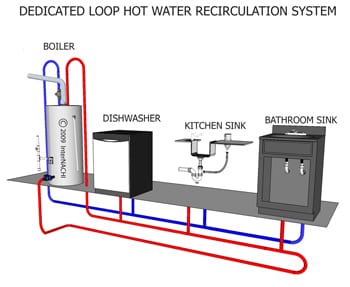With the help of increasing tax credits, higher energy prices, and falling costs for solar panels, solar energy is getting exciting. Below is a checklist that you can use to see if solar energy is right for your home. And if not, this article discusses other options for going solar.
Under the right conditions, putting solar collectors on your roof can be an attractive investment which can save you on the cost of supplying electricity or hot water to your home. But the catch is “under the right conditions.” So what are these “right conditions”? Well, the more questions below that you can answer “yes” to, the better the fit you are for adding solar panels to your home:
LOCATION: Do you live in a location that gets a lot of sunshine? The more sunlight per day you get, the better for the economics of installing a system. So southern states in areas that are not prone to being cloudy are the best.
ROOF ORIENTATION: Does your roof face south? Southern facing roofs are the best, as they get sunlight all day long as the sun travels across the sky.
ROOF SIZE: Do you have a roof that is not only large, but is free of obstructions such as vent pipes?
ROOF SHADING: Is your home away from trees that could cast shadows on all or part of your roof during large parts of the day?
ROOF AGE: Is your roof fairly new? You don’t want to put solar panels (which typically come with a 25-year warranty) over a roof that is going to need to be replaced anytime soon. Or else you may need to replace your roof as part of your solar project.
STATE TAX CREDITS & INCENTIVES: Federal tax credits apply to all states, but state tax credits and incentives can also be significant, and they vary from state to state. Do you live in a state with large credits and incentives? Here is a useful link where you can find the incentives that are offered for your particular state: state incentives
UTILITY POWER COSTS: Is your home connected to a utility with high electricity costs? The higher the cost, the more attractive it is to generate your own electricity (or hot water). Helpful accessories: solar-powered home appliances.
PERSONAL TAX ELIGIBILITY: Are you in a personal tax situation such that you can take full advantage of the available federal tax credits and incentives? You may need to check with a tax accountant to be sure. This is because of accounting rules such as solar tax credits not being allowed to be used to reduce your tax liability below your Alternative Minimum Tax.
INSURANCE COVERAGE: Does your homeowner insurance cover solar collectors?
CALCULATORS
If you want to look closer at whether putting solar panels on your home makes sense for your particular situation, then here is a link to an online calculator that you can use: Solar Estimate. With this, you enter your actual zip code, local utility, average electric bill, etc. and it calculates the expected solar radiation, tax credits, and expected economics for your specific home.
ALTERNATIVE WAYS TO “GO SOLAR”
If you like the idea of solar energy, but for one reason or another you want an alternative to actually putting solar collectors on your roof, here are a few other options that you can consider that will still allow you to participate in solar energy:
1) Buying “Green” Power: Some utilities give you the choice to buy green power by adding an additional charge to your monthly bill.
2) Community Solar Projects: if you don’t have space to put up solar panels, or if you live in an apartment or a townhouse, you can subscribe to a community solar garden.
3) Investing in a Solar Company: another way to be involved in solar is by being an investor in a company that is in the solar energy business.
SUMMARY
We hope this article has helped you to understand whether adding solar energy is right for your home, and what are the other ways that you can participate in the growing trend towards solar energy.





